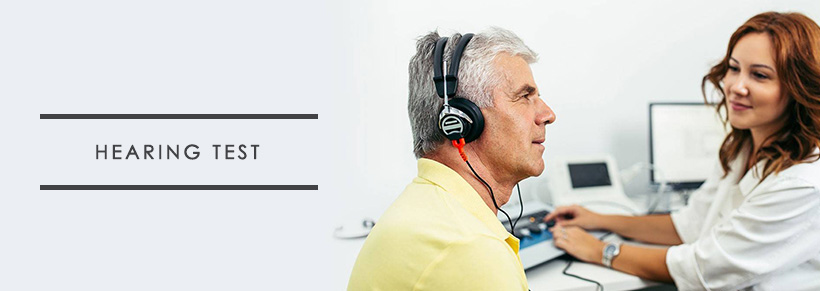

Hearing Test
A hearing test provides a measurement of the sensitivity of a person’s hearing across the full range of speech. The test will measure the quietest sound that can be heard several points across the speech range – this hearing test is termed an audiogram.
Signs you might need a hearing check:
This type of hearing loss occurs when the inner ear or the actual hearing nerve itself becomes damaged. This loss generally occurs when some of the hair cells within the cochlea are damaged.
Speaking and hearing people on the phone is difficult, even in a quiet room
You have to ask others to repeat themselves often, or it sounds like they’re mumbling
You might find it hard to keep up with conversation when in group situations
You might feel stressed or tired from having to concentrate while listening
Family members will mention that the TV is too loud, or that you’re shouting
Loved ones might hint that you’re finding it difficult to hear too

Getting the most from your appointment
At your appointment, you should be prepared to talk about all of the issues you have with your hearing (e.g. communicating, confidence, how you feel about your hearing) and whether you also experience any other problems associated with hearing loss (e.g. tinnitus). It’s important to talk openly about the different situations where you find it difficult to hear clearly (e.g. in noisy surroundings, in groups).
It might be useful to take someone else with you to this appointment. There is often a lot to remember and two heads are better than one!
What happens in a hearing test?
The audiologist performing your hearing test should introduce themselves and explain what is going to happen and the order of things to be done.
They will want to have a look into your ears to ensure there is no blockage (wax) or any reason the hearing test cannot be performed.
They will then want to take a brief history of your hearing, when you noticed problems, did they occur gradually or suddenly, have you had any infections or injury that may have caused the hearing difficulties and the problems you have had to deal with.
The audiologist will then want to test your hearing by performing an audiogram. The test will take about 20-30 minutes. You will be played a series of sounds through headphones and be asked to respond in some way that you have heard the sound normally by pressing a button every time no matter how quiet or faint.
This is done in one ear and then the other, as the results can be different. Depending on the result there may be other tests required, but this will be explained at the time.
Your hearing test results
Sound is measured in two key ways:
- volume or level – measured in decibels (dB)
- pitch or frequency (whether it’s high or low) – measured in hertz (Hz)
Your audiologist will probably refer to these two things when they explain the results of your test to you. If you do want to a copy of the test, it’s best to ask on the day.


